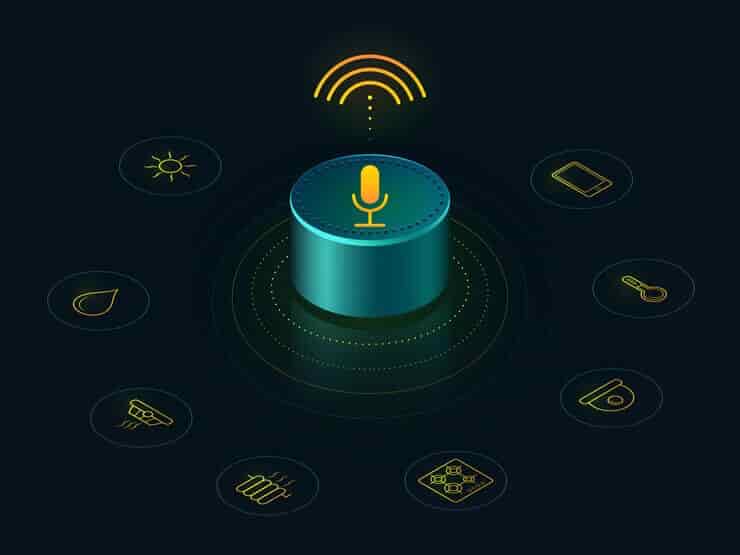Bluetooth is very popular. It's been around since 1999, and it is one of the most popular wireless communication protocols. That popularity has extended to smart home devices. ABI Research forecasts that the smart home market will account for 13% of all Bluetooth-enabled devices by 2025. Smart homes are becoming prevalent. The smart home market was valued at USD 84.5 billion in 2021 and is expected to have an annual compound growth rate of 10.4% from 2021 to 2026. The Bluetooth home control system will continue to be a typical home automation method as the appetite for smart homes grows.

Before exploring the Bluetooth home control system, here's a glance at other common home communication protocols.
Overview of other common Home Automation Communication protocols
-
Z wave – currently the most popular smart home automation protocol. It uses mesh networking or a wireless ad hoc network on a lower frequency (908/916MHz in the U.S.) to eliminate WiFi interference.
Z wave has secure 128-bit AES encryption and a practical range of about 30 feet. Data transfer rate is 10-100kbps, adequate for communications between typical Z-Wave devices, such as light switches and smart home hubs. Z-wave has strict standards that offer full interoperability between devices.
-
Zigbee is an open standard wireless protocol that operates as a mesh network. It operates on the same 2.4 GHz frequency as WiFi and is thus prone to interference. Zigbee has 128-bit AES encryption making it very secure.
The practical range is around 40 feet, and the communication data rate is 250Kbps. Its low data rate makes it un-ideal for high amounts of data transmission but perfectly fine for smart home device communication.
-
WiFi – a ubiquitous wireless networking technology that, despite its prevalence, is not ideal for use in smart homes. WiFi consumes a lot of power in comparison to the other communication protocols. Interference also increases with the number of connected devices.
On the plus side, WiFi's range is about 150 feet, and its data transfer capabilities are unmatched – up to 9600Mbps, making it useful in devices that need to send a lot of data, e.g., video.
As for device support on a mesh network, all the above technologies can support enough devices for a home mesh network. Here are the numbers.
- Z wave – 65000 devices
- BLE – 32767 devices
- Zigbee – 232 devices
- WIFI – 250 devices
The Bluetooth Home Control System
We'll specifically be speaking of Bluetooth Low Energy (BLE). Bluetooth low Energy operates on the 2.4 GHz band though it does not seem to share as much of Zigbee's interference problems with WiFi.
Unlike old Bluetooth, which was somewhat susceptible to security exploits, BLE uses 128-Bit AES encryption to create a vastly secure Bluetooth home control system network. BLE is a mesh technology in that the more Bluetooth products you have, the stronger and broader your network can become, making the Bluetooth home control system highly viable for intelligent home applications.
Add to that BLE's low power consumption, and you can see how the Bluetooth home control system can be the home automation protocol of the future. BLE came onto the market in 2011, and its main draw was that it consumed lower power over the same range while also using lower bandwidth.
BLE is designed to exchange small packets of data periodically. Here's a look at battery life in intelligent locks using different protocols.
- BLE 12 to 20 months
- Z-Wave 12 to 18 months
- WiFi 1 to 3 months
Research has found BLE in the Bluetooth home control system to consume less power than its competitors consistently, though it is somewhat hampered in its practical range of 33 feet.
Some BLE applications in the Bluetooth home control system
Device Control – use your smartphone to operate devices in your Bluetooth home control system e.g., Air conditioning, Smart locks, Philips Hue bulbs, and Robot vacuums. The list is vast.
-
In-home patient monitoring – a smart Bluetooth home control system with Bluetooth beacons installed can help track a person's movements. A Bluetooth beacon is a small wireless device that emits a low-energy signal for other devices to see. They are considered an excellent alternative to cameras as they offer more privacy.
Similarly, a beacon attached to commonly lost objects can help you track them.
DIY Bluetooth home control system – using a Bluetooth control relay app to control associated switches, e.g., light switch. An enterprising DIYer can use Arduino and hc-05 Bluetooth module for his home automation system.
Making the Bluetooth Home Control System a Reality
Z wave, Zigbee, and BLE are three standard low power/short-range/low data mesh technologies. Each with its benefits. Many other communication protocols work well in the applications they were designed for, e.g., Apple's HomeKit, Thread, KNX, and Infrared.
BLE has made it possible for many IoT devices to communicate, making the Bluetooth home control system a viable alternative to other home automation communication protocols.